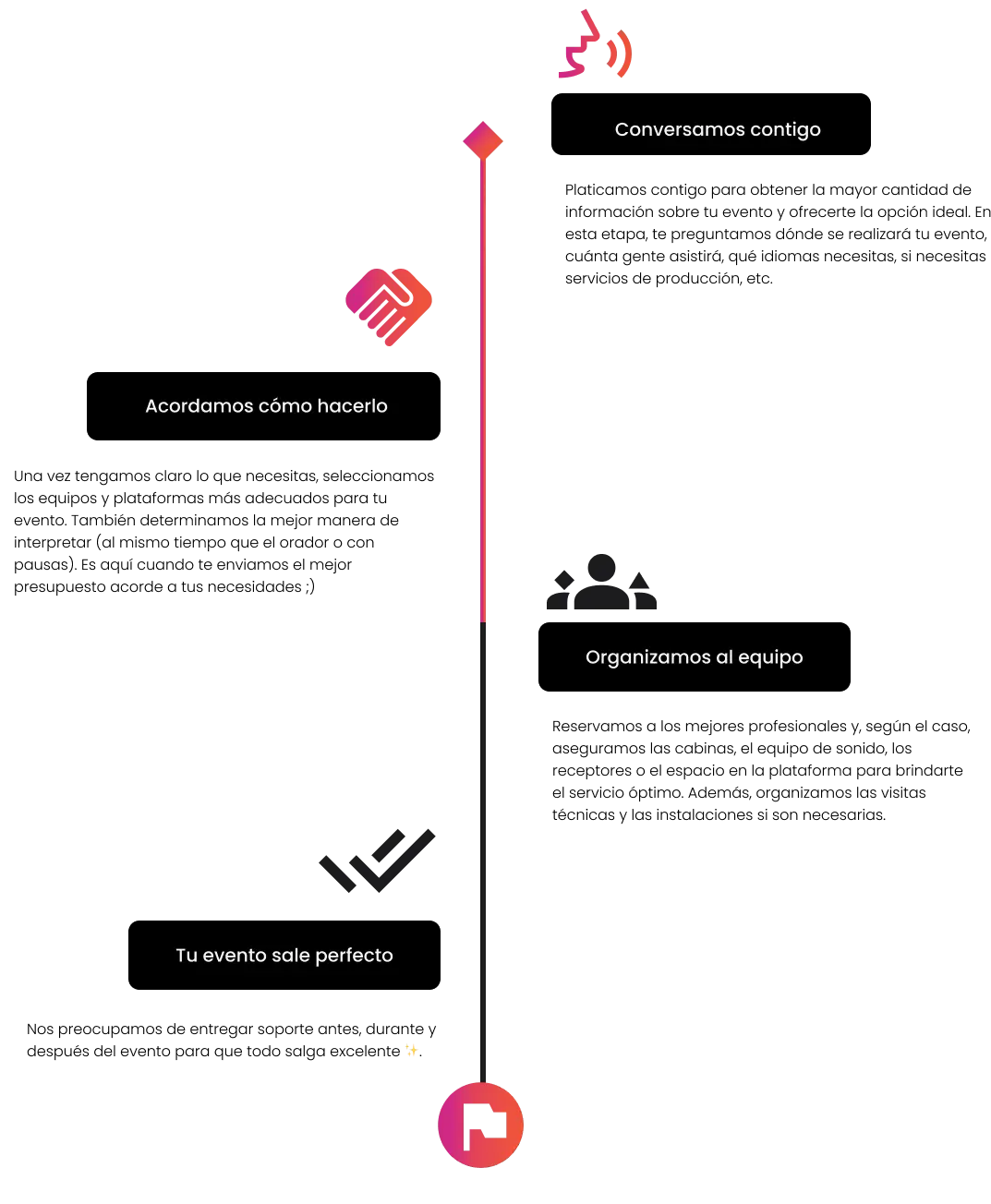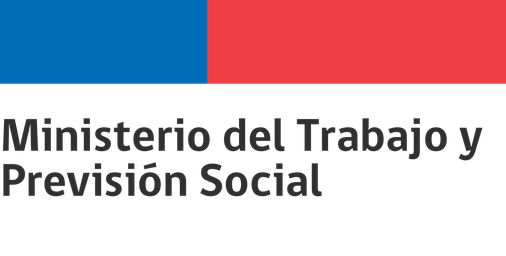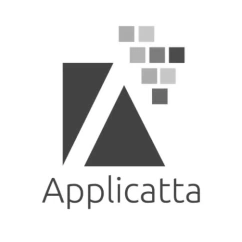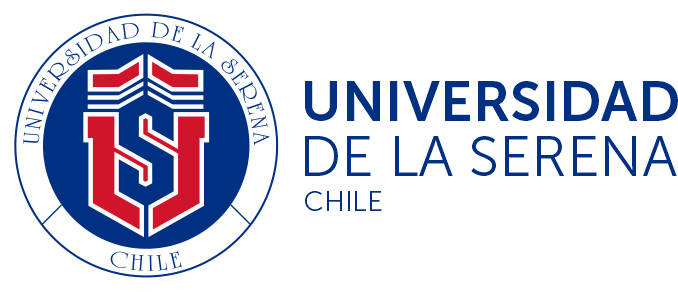We are one click away
Write to us with your questions, and we will clear them up. We are specialists in finding solutions.
How can we implement our strategy effectively?




They already trusted us and hit the mark
Frequently Asked Questions
Simultaneous interpretation is real-time oral translation: while the speaker is talking, the interpreter reproduces the message in another language with a ~1 second delay, achieving smooth communication without pauses.
A standard setup includes soundproof booths, digital consoles for interpreters, headset microphones, infrared or Radio Frequency transmitters, receivers with headphones for the audience, and a microphone system for speakers if the venue does not provide it.
- Simultaneous Interpretation: it is translated instantly, ideal for conferences and events with limited time.
- Consecutive Interpretation: the speaker pauses; it is used in press conferences or brief meetings.
- Written translation: conversion of documents, not of live speeches.
The price varies depending on languages, number of booths, days of use, and whether the event is in-person, hybrid, or remote. Virtual rooms (Zoom, Webex, etc.) only require the platform and reduce costs; portable equipment is charged per day and by the number of receivers. Transportation and installation are usually included in the final quote.
RSI is carried out through cloud platforms: interpreters work from remote booths and listeners receive the audio on their devices. It is ideal for webinars, hybrid events, or when the logistics of physical booths are costly.
AIIC (Asociación internacional de interpreters de conferencias) recomienda dos intérpretes por cabina y por idioma para eventos de más de 30 minutos; se turnan cada 20-30 min para mantener la precisión y proteger la voz. Eventos cortos (< 90 min) pueden admitir un solo profesional, pero lo óptimo es siempre el trabajo en pareja.
The booths provide sound insulation, a direct view of the stage, and comply with ISO 4043 standards; they ensure audio quality and the concentration of the interpreter. Portable equipment or whispering is useful for visits or small groups, but not for conferences with multiple languages.
Zoom and other virtual rooms support multilingual audio channels; simply activate the "Interpretation" option and assign each interpreter their channel. For broadcasts to streaming platforms like YouTube/RTMP, audio sources are combined and separate links are generated by language.
At Remote Translations, we use digital systems and headsets with closed signals to avoid interference and audio leaks. The technical team monitors levels in real time. We are also willing to sign confidentiality agreements, which extend to the interpreters and all staff.
AI is advancing, but it still does not match the cultural sensitivity, nuance reading, and confidentiality that certified professionals offer. Even in 2025, high-level organizations and companies continue to rely on human interpreters to ensure quality and security.
Google Meet has just launched a real-time voice translation feature powered by AI. It’s perfect for 1-on-1 video calls or small teams and, for now, it only covers a handful of languages. For multilingual conferences, technical speeches, or when cultural accuracy is critical, you will still need professional interpreters and dedicated equipment.








































































